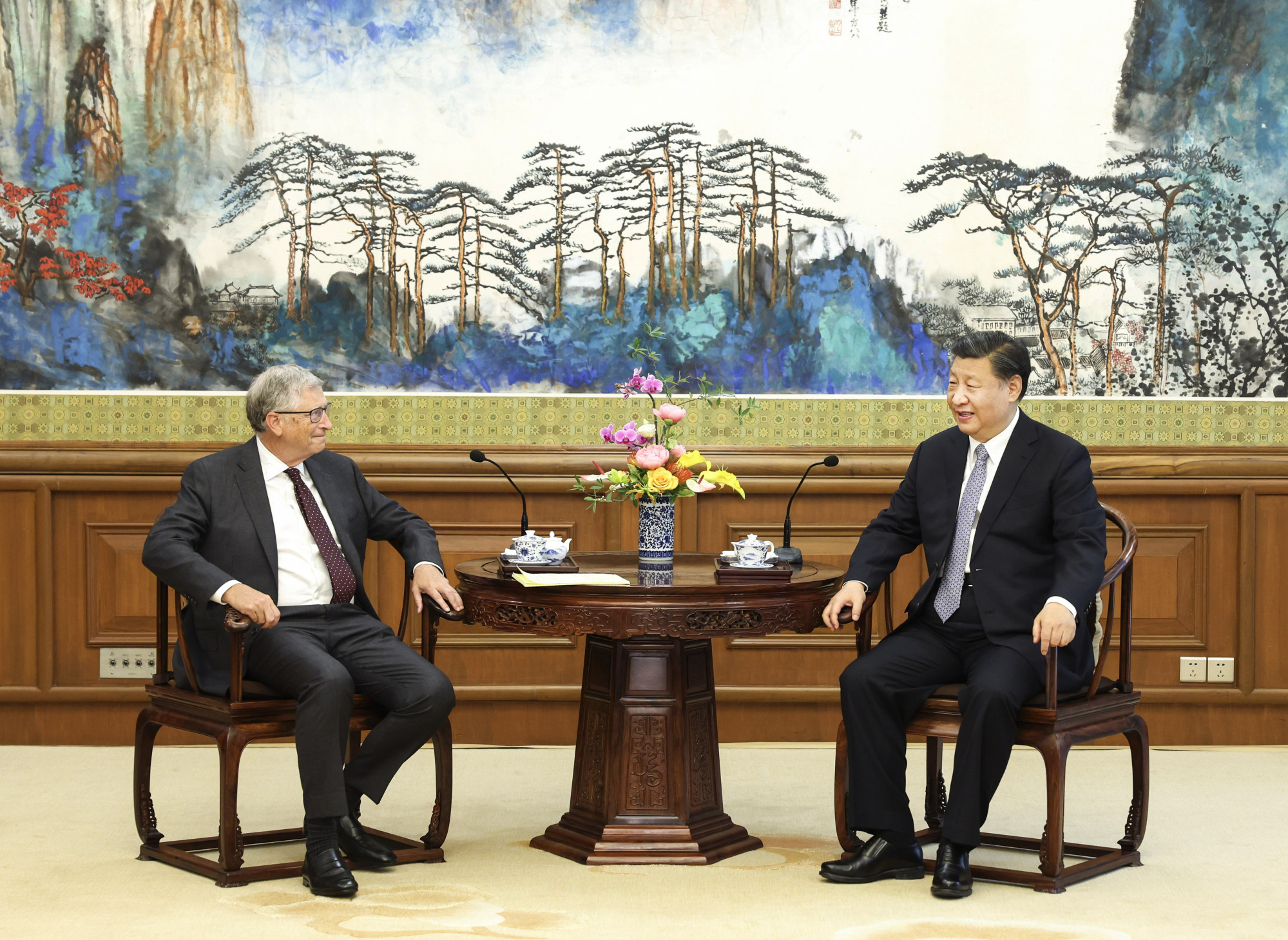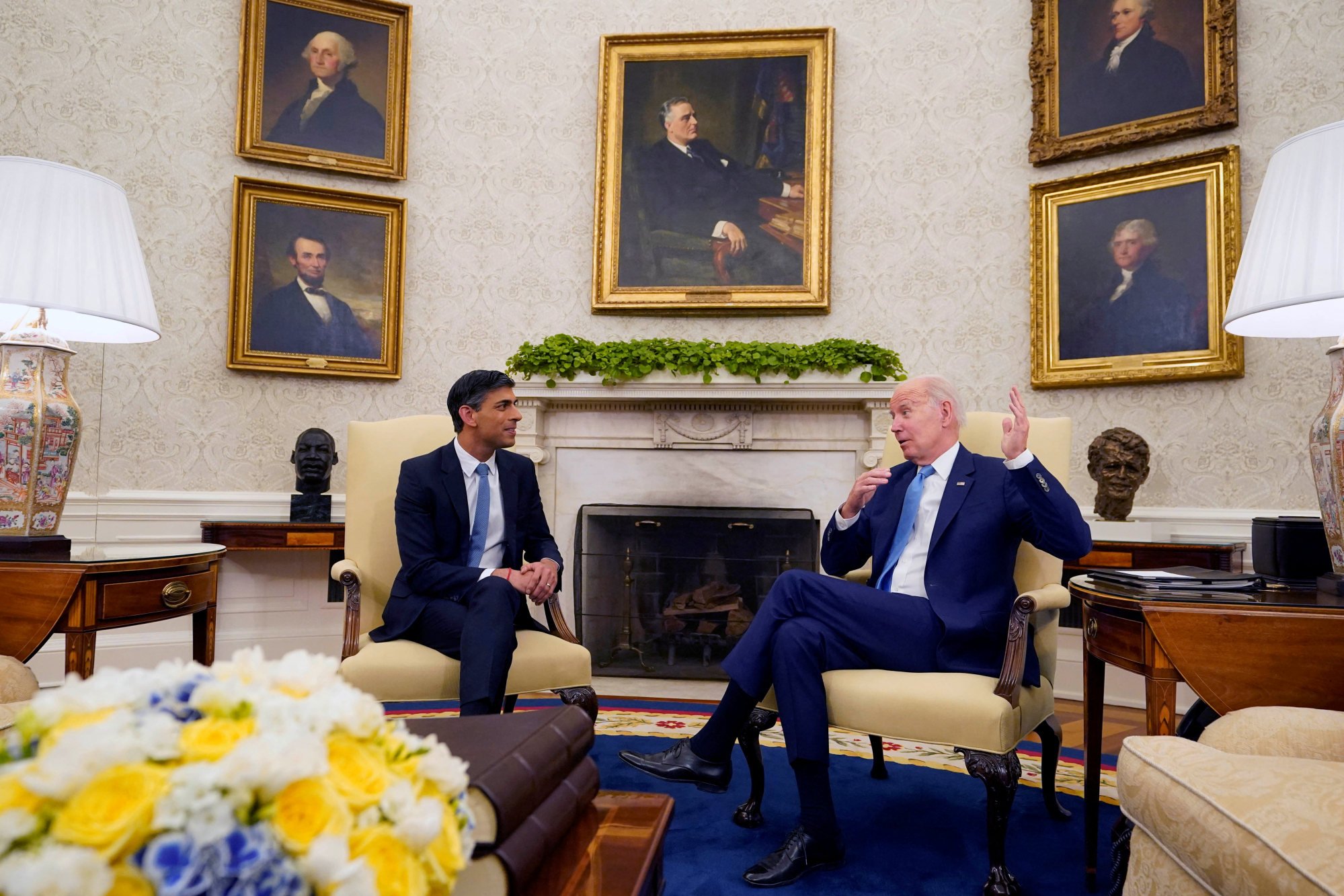
Landscape art vs leader portraits: how the US and Chinese diplomatic approaches differ
- When China hosts foreign dignitaries, massive landscape paintings feature in the background; for the US, it’s portraits of former presidents
- This suggests different foreign relations approaches. The US highlights the wisdom of its leaders while China prioritises harmony and the environment
Just as we might wear a T-shirt with a picture or carry a backpack with a graphic to convey a message – whether it is support for the local football team or Black Lives Matter – nations may also convey diplomatic messages through the architecture of state buildings or the decor of staterooms.
The flourishing landscape is echoed in the pots of lotus blossoms placed in the middle of the U-shaped conference table. The US delegation and their Chinese counterparts each sat on either side. In Chinese culture, lotus blossoms signify peace.
The choice of the meeting room highlighted the hope for more cordial relations between the two nations. Although serious differences remain, at the meeting both sides expressed mutual respect and a willingness to cooperate.

The painting depicts the majestic mountains that stretch over 400km across three provinces in northern China. The mountains help form major rivers in the North China Plain, providing lifelines for vast populations throughout history.
The landscape evokes the grandeur of the nation, its history and people, and the painting’s location in the Diaoyutai diplomatic complex, where international leaders are often received, is fitting.

The painting decorating their meeting room features a magnificent view of China’s Yellow Mountain, including towering pines and blossoming flowers. Again, this can be seen as a reference to the aspiration for a flourishing global ecosystem, within which both the US and Chinese economies can prosper.
For centuries, landscape art has been part of the political spectacle when Chinese leaders welcome foreign dignitaries. In the US, portraits of former presidents seem to serve a similar purpose when American leaders meet foreign officials.
Also on the wall behind them was a portrait of Alexander Hamilton, the first US secretary of the Treasury, right beneath his political rival, former president Thomas Jefferson, which some have suggested reflects the thinking that healthy arguments can strengthen the polity.

Every leader has a unique style of diplomacy but the consistency of the US and Chinese style of decoration in their government buildings suggests two disparate approaches to foreign relations. While the US focuses on presenting the wisdom and legacy of its leaders, China features its natural environment, which sustains the lives of its people.
Confucian classics state clearly that the government, like nature, should foster lives. In China, since the popularity of landscape paintings started emerging around the 10th century, such art has been used to decorate all kinds of public spaces and official buildings.
Nature represents a resource for nurturing the public good. China’s leaders were seen as responsible for taking care of the ecosystem so future generations can continue to enjoy nature’s gifts. This was a way in which leaders legitimised their governance.
Xi Jinping’s ‘Green Leap Forward’ will shape China’s environmental future
Whatever motivated the choice of background for these meetings, the point is that the US and China, along with the rest of the world, need to centre their diplomatic energies on coexistence and collaboration.
By embracing cooperation and coexistence, the world can harness the potential of China’s extensive markets, technological advancements and cultural richness, paving the way for a more inclusive and sustainable future.
Gerui Wang is the author of the forthcoming book: Landscape, Governance, and Ecology in China, 1000-1400. She is a visiting scholar at Stanford University and holds a doctorate from the University of Michigan. Her research centres on the intersections of art, public policy, technology and the environment

